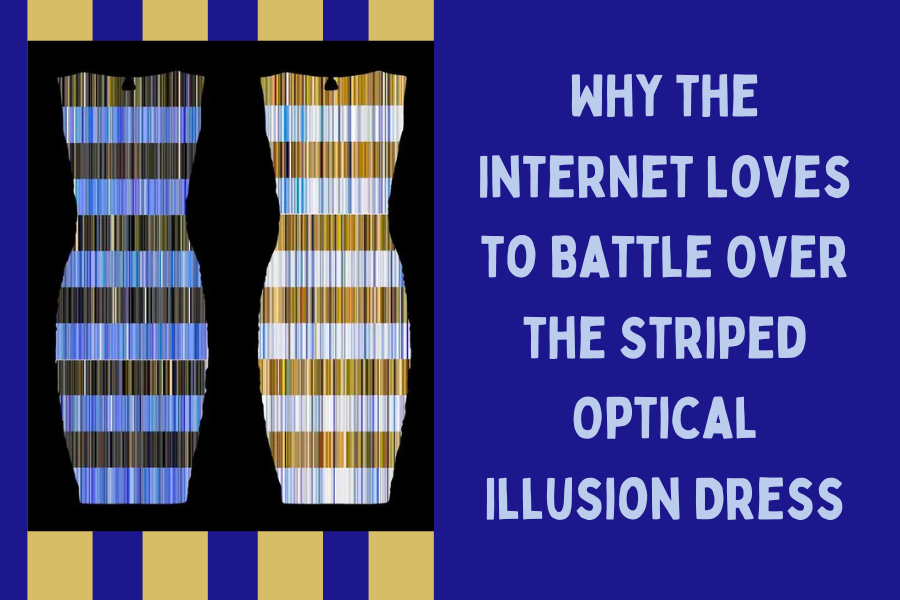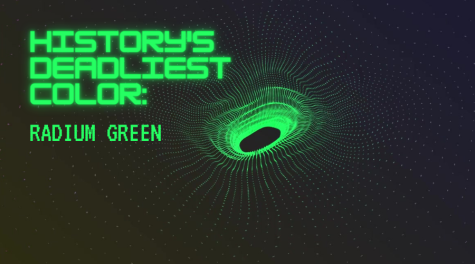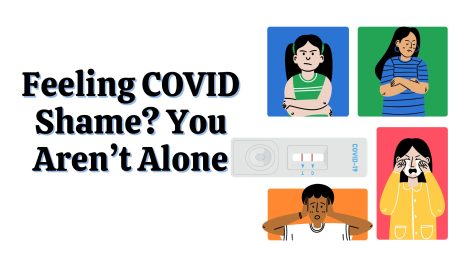Why the Internet Loves to Battle Over the Striped Optical Illusion Dress
I have never been threatened or insulted by friends to cut off relationships as much as when I devilishly revealed that I grew up pouring milk before adding cereal. Yes, you read this right. Not only am I crazy to have gone along with this as a kid, but to this day, I still adamantly believe that there is nothing wrong with either method of enjoying that perfectly sugary “breakfast.” Regardless of what you choose, I won’t judge. However, I am curious if you have ever argued with your friends, classmates, or family about internet debates that feel stupid and endless but that you also can’t give up. If you answered yes, I can relate to you.
A classic example of these controversial internet arguments involves the Striped “Optical Illusion” Dress, the infamous photo of a striped, alternating-color dress. Originally posted on Tumblr, this dress has trended globally for almost eight years. Since it surfaced in 2015, it has dramatically divided viewers into two sides – those who see the dress as blue and black and those who see it as white and gold.
Several studies were conducted soon after the photo went viral, with standout research emerging at Wellesley College. Led by Dr. Bevil Conway, the study concluded that the sample of students was divided into three groups rather than the two more commonly observed online. This new third group saw the stripes on the dress as black and brown. From these observations, they concluded that the poor quality of the image, as well as the ambiguity of the context and conditions of the dress, prevented the human brain from making a clear and confident decision. Processing color is already a complex process, with pupillary systems and cones in the eyes to the brain’s categorization of information and signals. Therefore, the study concluded that the dress’ true color would only be possible to distinguish if there was sufficient information to help the viewers physically process the image.
The lack of information includes the light source that is illuminating the dress. Without this context, a cooler light, an artificial incandescent light, or a brighter and warmer natural light could be shining on the dress. The overexposure and blurry pixelation of the photo make it impossible to discern the type of light that illuminates the dress, especially when trying to find context within the slim crop of the background.
Another element of the dress that caused disputes among viewers was how they interpreted the material. It was more likely that viewers perceived the dress as metallic if they thought the shawl or fabric stripes of the dress appeared shiny or shimmery in person. As a result, people who believed the dress to have these metallic hues likely associated the dress with the color gold.
Even though the photo is unprofessional and of low quality, it has not failed to provoke defensive responses. Why were online users so caught up in explaining why one perspective is right and the other is wrong? An explanation for this phenomenon is that when polarizing topics involve judgments about how someone perceives reality, such as visual illusions, every individual has a unique perception of how something appears. Because we can only experience what we see, we quickly become defensive. Being right is rewarding, but being defensive when we feel targeted is easier.
This response takes focus practice to control, so even though participating in a “division on the internet” can be entertaining and light-hearted fun, make sure not to get too heated in these silly little arguments!
Sources:
https://www.mindbodygreen.com/articles/how-to-respond-to-criticism-without-being-defensive
https://www.nytimes.com/2015/05/15/science/the-science-behind-the-dress-color.html









